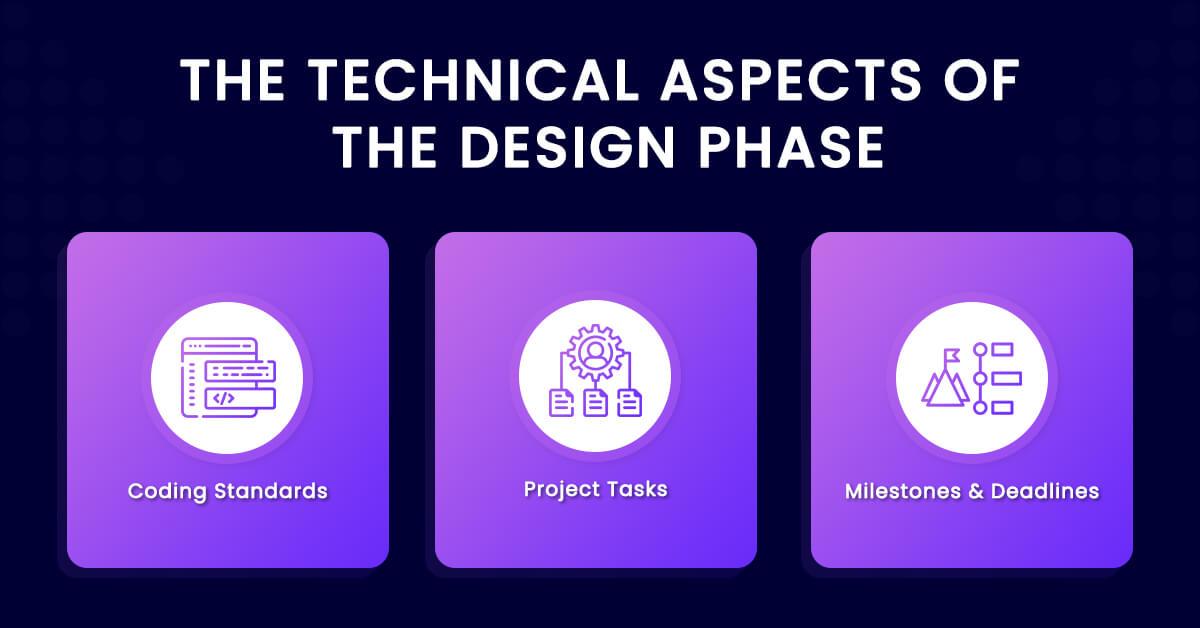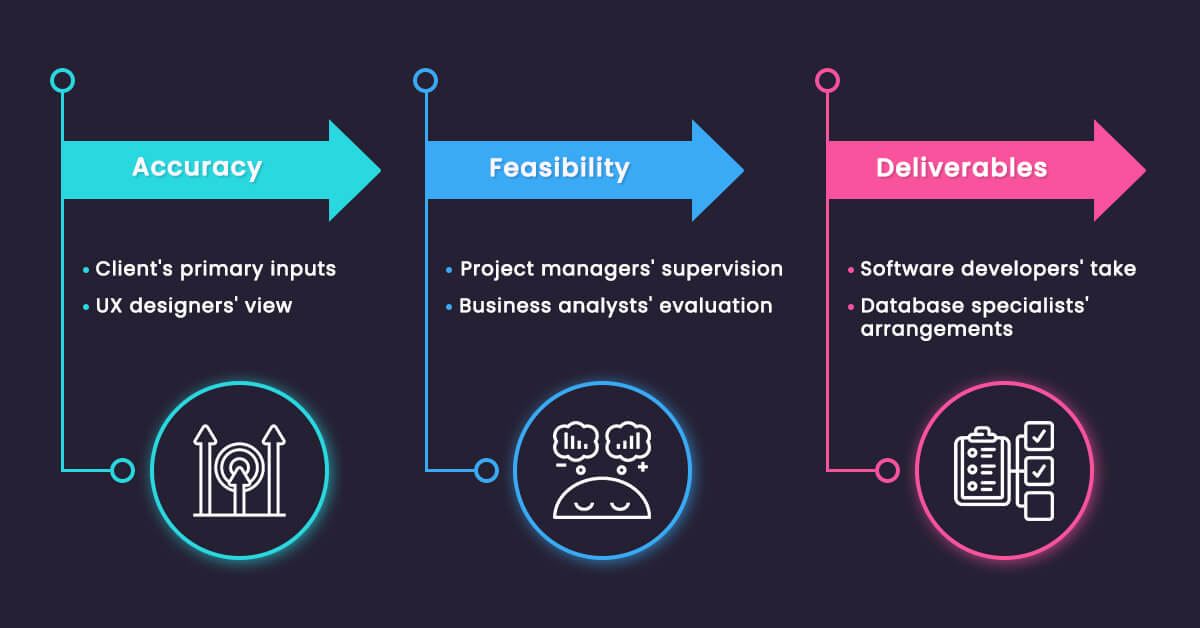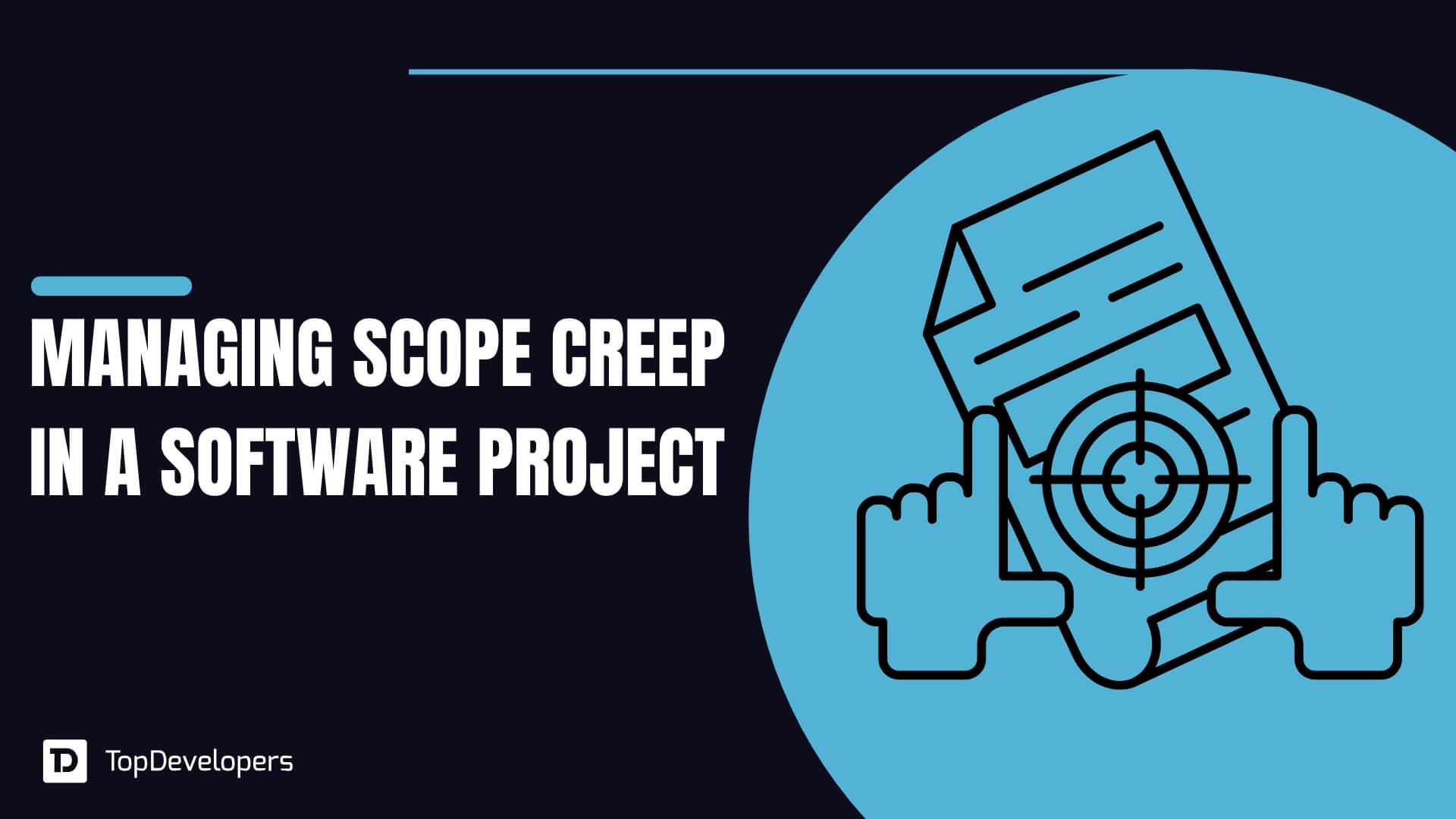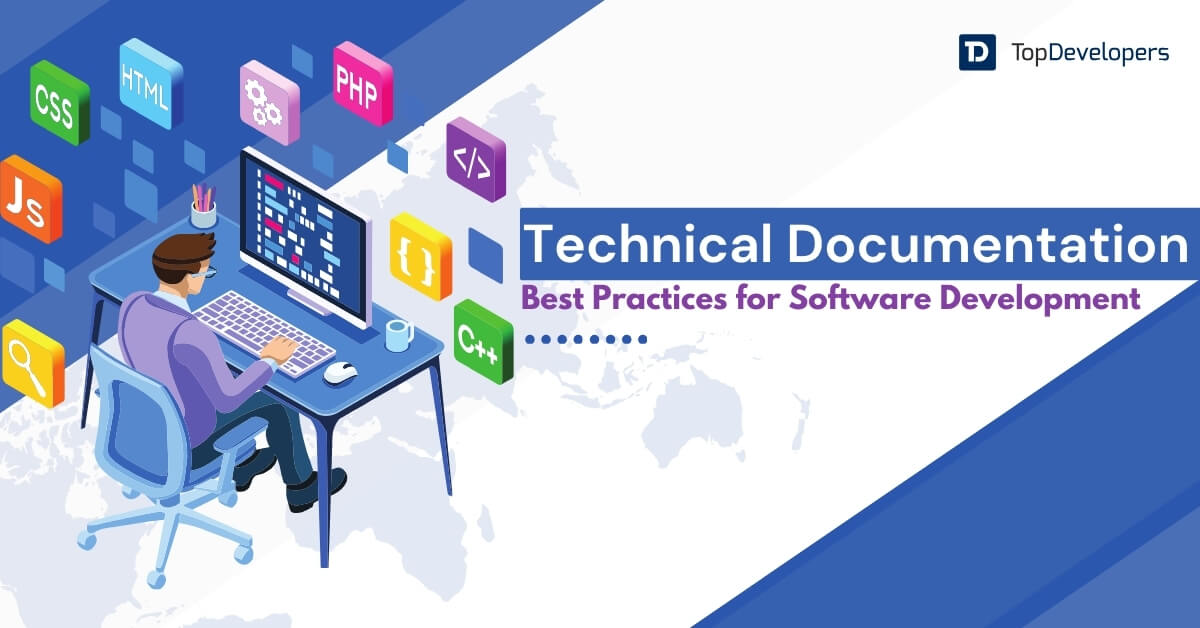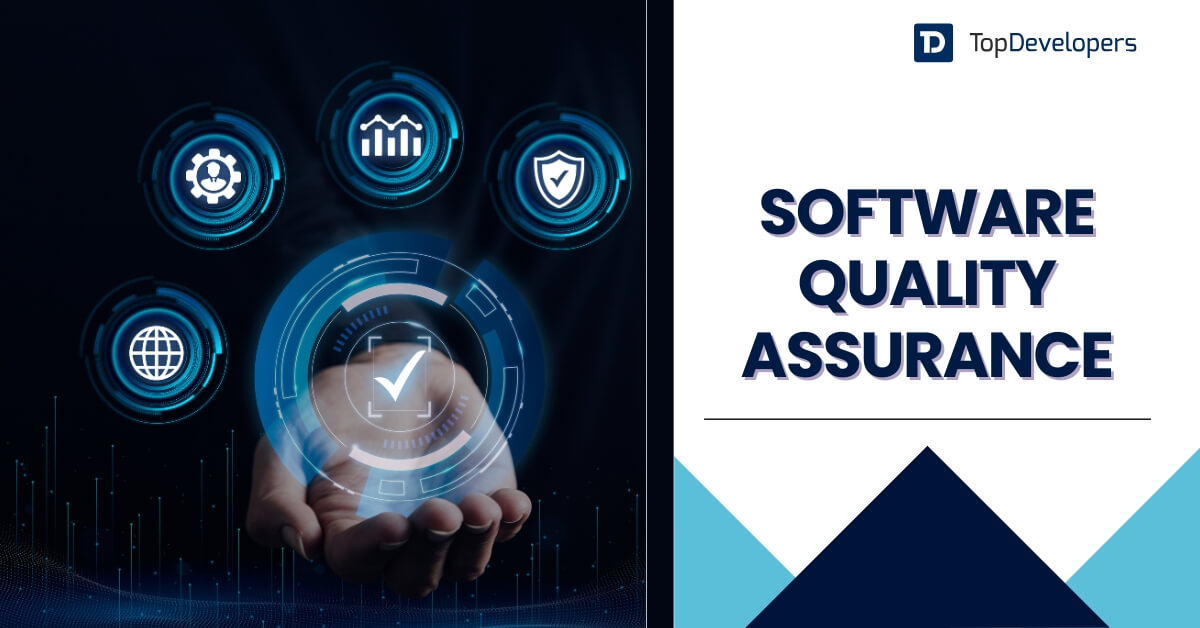
In a software development life cycle, the design phase is a stage wherein the technical specifications and approach for every detail of the tool are researched and narrated by software programmers in software development companies.
The design phase in SDLC, depending on the project objectives and complexities, may mention the user interface, database design, UML schemas, sketches of software components, HTML screen designs, system interfaces of important pages, and prototypes.
The buyers of the software products utilize design phase details to decide upon the final product’s overall look and feel. And, to make it foolproof and flawless, all such design phases in the software development life cycle are kept as documentation i.e., Software Requirement Specification (SRS) documents.
The SRS documentation houses finely described business objectives, software development standards, and probable scalability of the software which makes the digital tool a future-ready tool. The SRS document shall be approved by the buyer before the software development life cycle is initiated.
Table of Contents
What are the objectives of the design phase in SDLC?
Software development outsourcing requires a foolproof approach to defining your business objectives and how you want the digital product to stick to them. For instance, if you are to make a car, you should have the farsightedness to visualize how your car will look. Now, the carmakers shall have a clear vision based on the detailed plan provided such as how the vehicle would run, how would the users sit and drive the vehicle, and so on. Such all questions can be answered only through the detailed design phase in the software development life cycle.
Now, think the other way around. If the carmakers have no clue about how you want your car to look, they would build the vehicle based on their experience. It may also happen that they build a sedan whereas you were aiming to build a hatchback! It is the same with the software development process – every single component or element is predefined with its character and facilitation.
Even in the design phase of the software development life cycle, the detailing of every component shall give a hired dedicated software development team a clear idea about how the final product is expected to look and feel; hence, they would then work on exactly what is expected. Here are the objectives of the design phase in SDLC –
- Converting all business objectives into real software features
- Considering all technical aspects, specifying the goals of the digital tool
- Planning and outlining all security risks related to software, hardware, and others
- Strategic approach to every element of design in the user interface
- Taking consideration and suggestions of each designer and concerned stakeholder
- Approval of all concerned designers and most importantly the client
The primary goal of the design phase in SDLC is to transform all the objectives into complete design documentation that is detailed and unambiguous. Once the design phase is reviewed and approved by authorities, the design development begins.
What are the deliverables after the approval in the design phase in SDLC?
The deliverables of the design phase in SDLC help the buyer get detailed product specifications related to designs of all kinds. The key deliverables from the design phase in SDLC give a fair idea of UI (User Interface) reviews, practical and technical aspects of design, and quality assurance and control through various validating factors and tests.
The visual appeal of the UI
By building a visual representation of the product-to-build, there is a clear future appearance of the final product with its attractive user interface designs. The UX designers give their best shot to draft the project storyboard to neatly outline the UI components. The storyboard and wireframe is outlined after careful research and analysis of business objectives and considering all the feedback and inputs from the stakeholders and design department.
Once the soft copies are approved, the final handouts are submitted to authorities for their pursuit. The manager then reviews and assures that visuals should meet all the business objectives and software product goals. Should there be any change or escalation, the manager conveys the message to the concerned designers.
The technical aspect of software design
This design phase in the software development life cycle focuses more on technical aspects that would build the project. The primary objective of this phase is to observe how the business thoughts are met with technical advancements.
It is observed that to achieve this objective, various concerned experts such as technical architects, DevOps engineers, and other technology specialists make a team and help software designers to finish the task i.e., the design phase in the software development procedure. Various technology stacks for software development are taken into account. Ultimately, these are the components of the design phase –
- Coding standards: Dedicated custom software development professionals define the standards of coding to assure consistency in the quality of programming.
- Project tasks: The list of project tasks is mentioned so that the roles and responsibilities of software designers are equally allotted.
- Milestones and deadlines: Each design component is defined with its objective and deadline. This all contributes to the overall milestones of the project. Missing the deadline would point to the responsible person as the tasks are clearly mentioned and distributed.
Quality assurance and control
The software developers team would approve the designing phase and further evaluate the coding and project path to meet the predefined objectives and product goals. The needs of clients are of paramount importance and it is made sure after the designing phase before the full-fledged software development life cycle begins further.
Who are involved in the designing phase of Software Development Life Cycle?
As it is already mentioned that there are many stakeholders, team members, and concerned professionals and experts in the designing phase, we can further define each of them with their probable roles and responsibilities.
Client: You, the client, can provide your business objectives and goals for designs. Many entrepreneurs also prefer providing references to other available products and projects.
UX designers: These are the special designers who focus on engaging in the designing of the user interface. The user-centric designs of the software, be it a mobile app or website, should be carefully outlined and visualized.
Project manager: The key person in the entire software development lifecycle, the manager is the helmsman of the project to leading the entire team of designers and developers. Task allocation, monitoring the entire process, and assuring the milestones are a few responsibilities of the project manager.
Business analysts: These specially employed experts mention and narrate the project requirements to UI designers and give valuable feedback after the final designs are ready.
Software developers: Along with UI UX designers, they help build the project after market research to make it user-specific and premium in the market. They are bound to create genuine codes as per standards.
Database specialists: The database professionals put their experience in designing architecture and building data strategies that affect screen layout, business logic, and database layout to make everything into a physical entity.
QA specialists: Business owners get great benefits through quality assurance specialists who take the final test of the product before making them the deliverables. The testing tools should be standard and licensed to assure the optimum quality of the product.
To conclude
Before you hire remote developers, it is important to make sure that all the phases in SDLC are in place. The design phase in SDLC delivers the most important element of the entire life cycle i.e., the design. Depending on the designing phase, the system shall be developed in the next phase, the development, because to make the product adaptable, the design (UI UX) is assured to be flawless and spot on the ergonomics.
Digital products that are carefully planned and developed help startup and enterprise business owners automate external and internal operations which, in turn, provide an unparalleled experience to the end users.
 Avantika Shergil
| Oct 18, 2022
Avantika Shergil
| Oct 18, 2022
Avantika Shergil is a technology enthusiast and thought leader with deep expertise in software development and web technologies. With over 8 years of experience analyzing and evaluating cutting-edge digital solutions, Avantika has a knack for demystifying complex tech trends. Her insights into modern programming frameworks, system architecture, and web innovation have empowered businesses to make informed decisions in the ever-evolving tech landscape. Avantika is passionate about bridging the gap between technology and business strategy, helping businesses build customized software and website, and understand about different tools to leverage effectively for their ventures. Explore her work for a unique perspective on the future of digital innovation.
